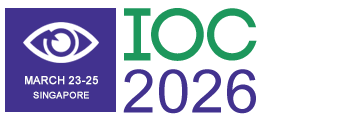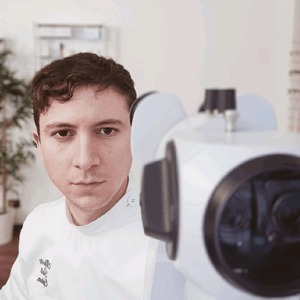Title : Managing irregular corneas with freeform contact lenses: From clinical assessment to visual success
Abstract:
The management of irregular corneas remains one of the most demanding challenges in modern contact lens practice. While traditional approaches may provide partial solutions, the advent of advanced imaging technologies and freeform lens design software has opened new possibilities for highly personalized and effective fittings. This lecture will present two clinical cases that exemplify the integration of precise diagnostic tools, innovative design strategies, and clinical expertise in the rehabilitation of patients with complex corneal morphologies. The first case concerns a patient with keratoconus, documented through anterior segment OCT and corneal topography. The analysis begins with a detailed interpretation of the topographic map, emphasizing key strategies and “clinical tricks” to correctly assess corneal morphology. Identifying cone location, eccentricity, and local curvature gradients is essential to anticipate potential fitting challenges and to determine the parameters required for optimal lens performance. These diagnostic findings are then transferred into an innovative freeform contact lens design software, capable of generating highly individualized geometries. The software not only produces the most suitable lens shape but also allows for virtual simulations of the fluorescein pattern, offering predictive insights into lens-to-cornea interaction. Furthermore, the system incorporates advanced risk assessment, including oxygen transmissibility calculations in relation to corneal thickness and lens profile, following established evidence such as the Holden-Mertz criteria. This integrated approach provides a comprehensive framework for balancing mechanical fit, tear exchange, and metabolic requirements.
The theoretical design process is followed by clinical images of the actual fitting, where practical outcomes are discussed in detail. Particular attention will be given to identifying potential pitfalls—such as lens decentration, localized bearing, or excessive clearance—and to the parameters that can be adjusted to improve both comfort and vision. The second case focuses on a post-keratoplasty cornea, representing an even more complex scenario. Post- transplant corneas often exhibit extreme irregularities, including localized flattening, steep graft-host junctions, and asymmetric peripheral elevation changes, all of which complicate the fitting strategy. As with the previous case, anterior segment OCT and corneal topography form the basis for the diagnostic evaluation. The same methodology—detailed map interpretation, software-driven freeform lens generation, fluorescein simulation, and oxygenation assessment—is applied. However, the discussion will highlight the specific challenges of post- keratoplasty eyes, such as unpredictable topographic patterns, increased risk of hypoxia due to altered physiology, and the need for careful balancing between adequate clearance and sufficient oxygen supply. Clinical images will illustrate the application process, demonstrating both the successes and the difficulties encountered. Adjustments in lens design parameters will be discussed, providing attendees with practical insights into managing these challenging cases.
By presenting these two cases in parallel, the lecture will underline the extraordinary potential of freeform contact lenses to transform clinical outcomes in irregular corneas. The integration of precise imaging, intelligent software design, and rigorous clinical evaluation represents a new paradigm in specialty lens practice. Attendees will gain not only an understanding of the technical workflow but also an appreciation for the clinical decision- making process that underpins successful rehabilitation in keratoconus and post-keratoplasty patients.




